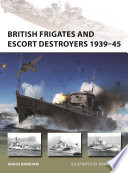

Most ebook files are in PDF format, so you can easily read them using various software such as Foxit Reader or directly on the Google Chrome browser.
Some ebook files are released by publishers in other formats such as .awz, .mobi, .epub, .fb2, etc. You may need to install specific software to read these formats on mobile/PC, such as Calibre.
Please read the tutorial at this link: https://ebookbell.com/faq
We offer FREE conversion to the popular formats you request; however, this may take some time. Therefore, right after payment, please email us, and we will try to provide the service as quickly as possible.
For some exceptional file formats or broken links (if any), please refrain from opening any disputes. Instead, email us first, and we will try to assist within a maximum of 6 hours.
EbookBell Team

4.7
26 reviewsAs the Battle of the Atlantic grew fiercer, Britain and the Commonwealth needed large quantities of new warships to defend their shipping which could be produced cheaply. The two largest type of ship produced were the escort destroyer and the frigate. Escort destroyers were essentially small destroyers optimized for anti-submarine warfare, with speed and anti-surface weaponry sacrificed, while frigates were simpler, designed so they could be built quickly in civilian shipyards. Nearly 200 were built. These warships were key to protecting convoys in the Atlantic Ocean where their range and seagoing qualities made them well-suited for operations. They were also used to form hunting groups, and collectively accounted for the destruction of scores of German U-boats. Their arrival came at a critical time for the Royal Navy, when the Battle of the Atlantic was reaching its climax, and losses among both merchant ships and escorts were mounting. In this book, naval expert Angus Konstam outlines the history of the Hunt-, Loch-, Bay-, and River-class escort destroyers and frigates, revealing how crews fought, and what life was like on board. Using archive photos, detailed colour profiles, a Hunt-class cutaway, and battlescenes of the ships at war, he explores the key role played by these small but deadly escorts.